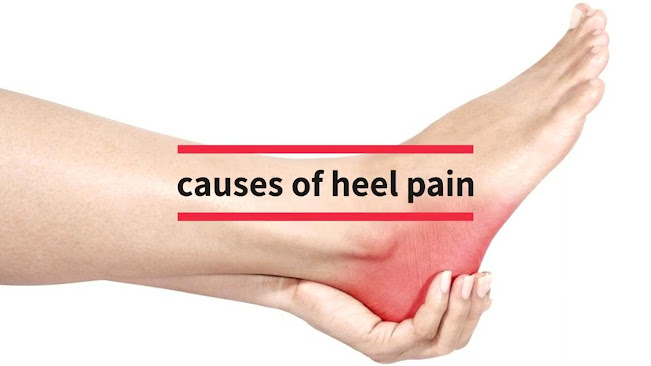
Plantar Fasciitis and Heel Pain (The Often Overlooked Cause) By Dr. Jack Herbert
Dr. Jack Herbert
September 8, 2022
- Natural Healing
- October 18, 2022
- No Comment
- 4 minutes read
There are many different causes of heel pain, some of them include:
• Bursitis (joint inflammation)
• Achilles tendonitis
• Achilles tendon rupture
• Osteomyelitis (a bone infection)
• Peripheral neuropathy
• Bone tumor
• Stress fractures
• Tarsal tunnel syndrome (1)
One of the most common causes of heel pain is believed to be plantar fasciitis.
The word “fasciitis” means “inflammation of the fascia of a muscle or organ” while “plantar” relates to the sole of the foot. Two million patients get treatment for plantar fasciitis, annually. That makes it the most common cause of heel pain. (2)
Some of the symptoms of plantar fasciitis include Achilles tendon tightness and dull or sharp pain on the bottom of the heel which is usually worse in the morning and worsens after exercise. The discomfort may continue for months.
Conservative treatment usually consists of:
• Rest
• Ice
• Stretching
• Better quality shoes
• Use of a heel cup
• Orthotics
• Over-the-counter medications
If the pain does not respond to conservative treatment your doctor may recommend steroid injections as well as other procedures. If the pain is still unresponsive, in rare cases surgery may be recommended.
Many doctors are not aware that heel pain can be caused by trigger points in the calf musculature. These trigger points can refer pain into the heel.
A trigger point is a localized usually tender or painful area of the body and especially of a muscle that when stimulated gives rise to pain elsewhere in the body. (3)
According to Janet Travell MD, the author of “Myofascial Pain and Dysfunction.” Trigger points in the soleus muscle (a muscle in the calf) can cause referred pain into the heel. (4)
When the trigger points are inactivated, the pain usually subsides.
Myofascial Release can be helpful to inactivate the trigger points.
Myofascial release is a technique designed to release restrictions such as trigger points, muscle tightness, and dysfunctions in soft tissue that may cause pain and limit motion in all parts of the body. It has shown success in decreasing pain and increasing mobility. (5)
In addition to myofascial release, infrasound (not ultrasound) used over the area of pain on the heel may be helpful in alleviating the pain.
Many chiropractors are trained in myofascial release and are familiar with infrasound. If you are unable to locate a healthcare professional familiar with infrasound, infrasound units are available to the public online. They are also known as “Qigong Infrasonic Machine.”
Also, many physical therapists and massage therapists are trained in myofascial release.
If myofascial release and infrasound do not resolve the problem, then acupuncture may be necessary to inactivate the trigger points.
A doctor familiar with the anatomy of the calf and certified in acupuncture should be able to inactivate the trigger points.
When the trigger points in the calf are inactivated the pain in the heel should subside.
If you have heel pain, consult with your healthcare provider to determine the diagnosis. If the diagnosis is plantar fasciitis then your pain may be caused by trigger points in the calf musculature. Discuss this and any other health concerns you may have with your healthcare provider.
Disclaimer:
Consult with a qualified health care professional before using an infrasound machine or any other medical appliance.
References:
- https://www.mayoclinic.org/symptoms/heel-pain/basics/causes/sym-20050788
- https://my.clevelandclinic.org/health/diseases/14709-plantar-fasciitis
- https://www.merriamwebster.com/dictionary/trigger%20point
- Myofascial Pain and Dysfunction The Trigger Point Manual Volume Two, The Lower Extremities, Janet Travell MD & David Simmons MD pp. 427 Williams & Wilkins copyright 1992
- Dutton, Mark. Orthopedic examination, evaluation, & intervention. New York : McGraw-Hill, c2004 pages 331-332, 1218
Post Views: 1,196



